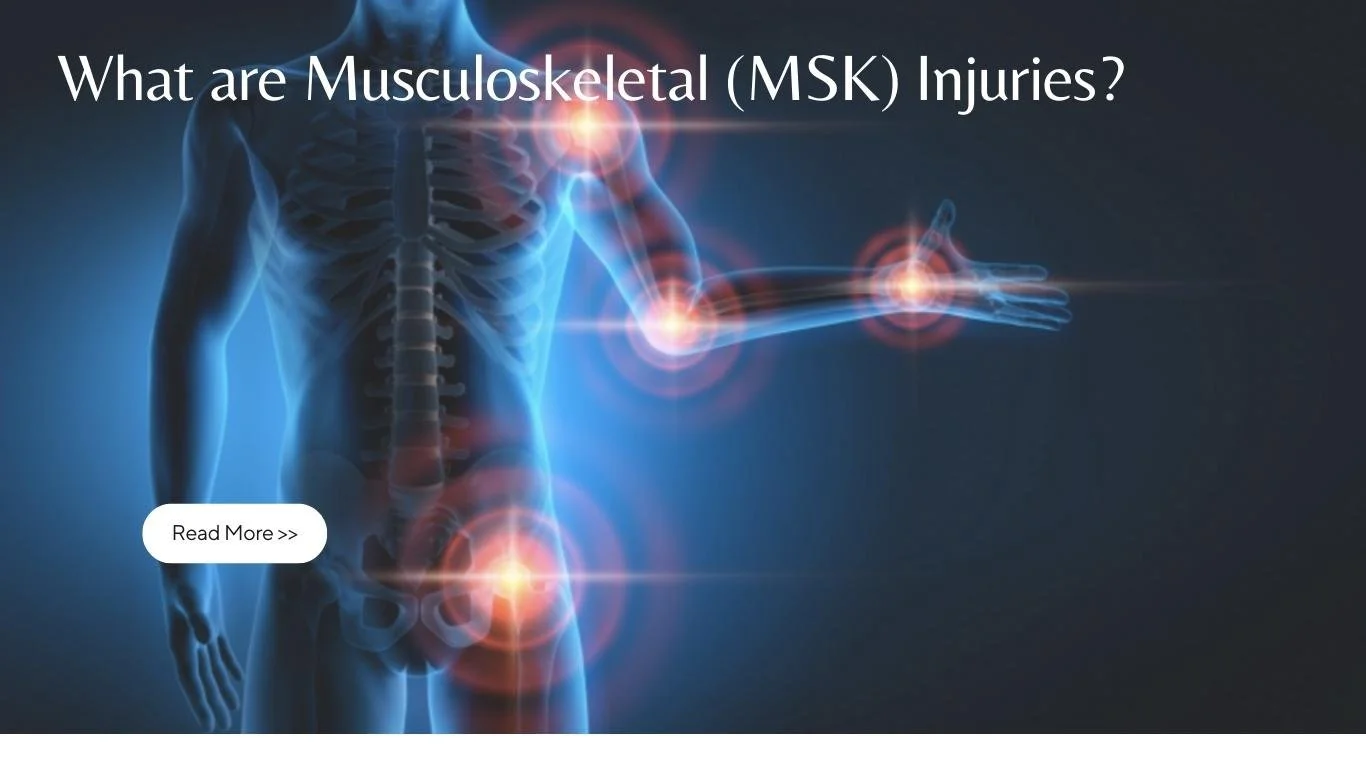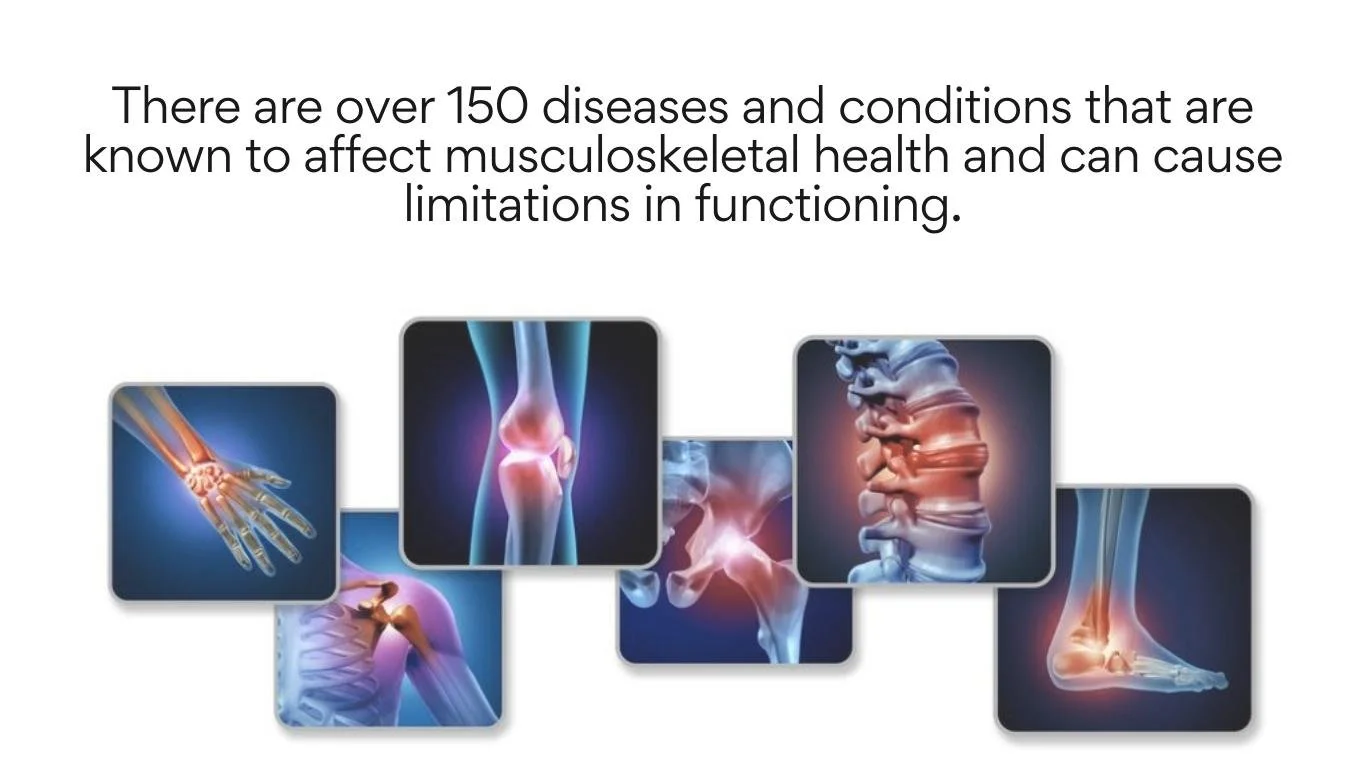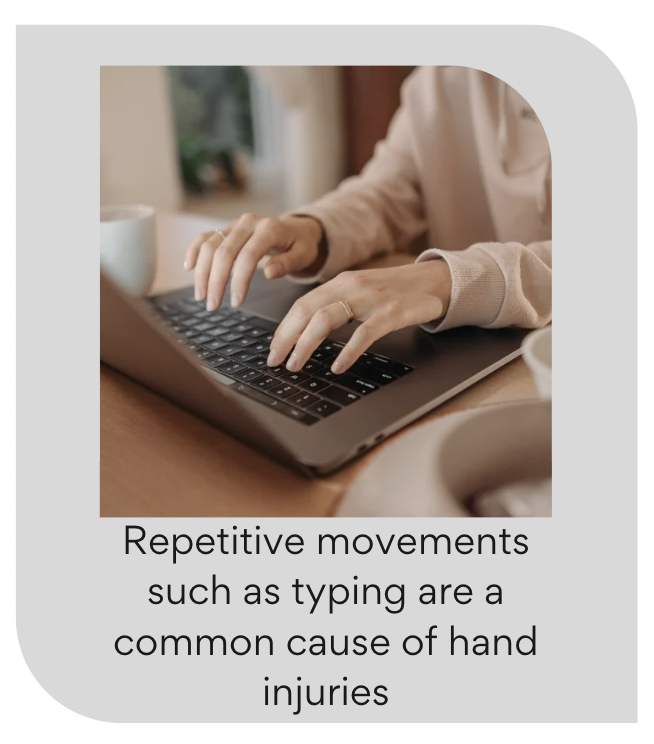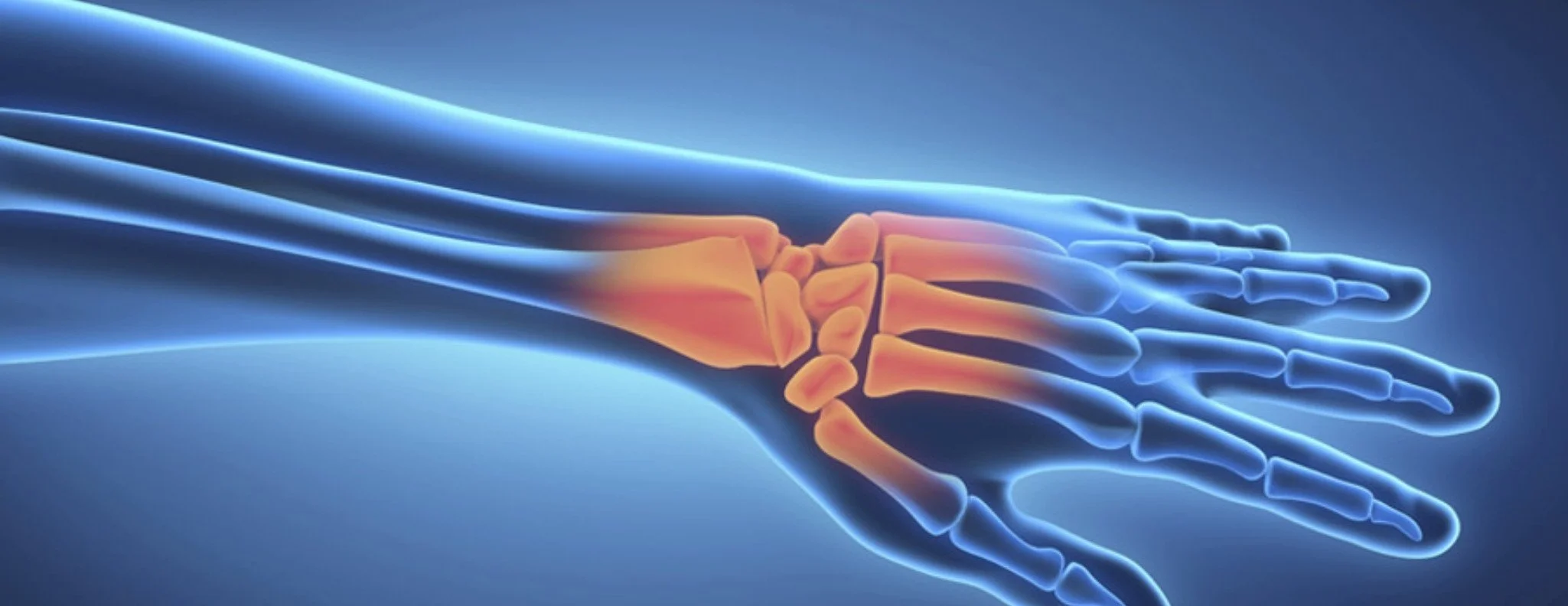What are Musculoskeletal (MSK) Injuries?
The market Size for entire body MSK injury through the globe is 129 Billion.
Musculoskeletal health refers to the condition of an individual's locomotor system. This comprises intact muscles, joints, connective tissue, and bones.
Most commonly, musculoskeletal conditions are characterized by persistent pain and impairments in mobility. The range of these conditions can span from sudden and short-lived ones such as fractures and sprains or long-term ones like osteoarthritis.
According to the World Health Organization, musculoskeletal conditions include :
“joints, such as osteoarthritis, rheumatoid arthritis, psoriatic arthritis, gout, spondyloarthritis; bones, such as osteoporosis, osteopenia and associated fragility fractures, traumatic fractures; muscles, such as sarcopenia; multiple body areas or systems, such as regional (e.g. back and neck pain) and widespread (e.g. fibromyalgia) pain conditions, inflammatory diseases”
An analysis by Global Burden of Disease found that about 1.71 billion people around the world live with musculoskeletal conditions
These injuries include low back pain, neck pain, osteoarthritis, fractures, and rheumatoid arthritis. This analysis highlighted the variation in age and diagnosis of injuries that individuals experience globally.
Specific hand and wrist musculoskeletal injuries
In 2016 the Bureau of Labor Statistics found that about 350,000 cases of work-related musculoskeletal disorders (WMSDs) were reported in the United States. These disorders often encompass injuries to the hand and wrist where individuals experience mild to severe symptoms of musculoskeletal pain.
Common WMSDs that impact the hand and wrist include:
Tendonitis: This is often due to repetitive wrist and shoulder motions or sustained hyperextension of the arms. Symptoms include pain and weakness in the affected area.
Carpal Tunnel Syndrome: Repetitive wrist motions are a common risk factor for this disorder and symptoms include pain, numbness, and weakness, especially at the base of the thumb.
Thoracic Outlet Syndrome: This disorder is often caused by prolonged shoulder flexion, carrying heavy loads on the shoulders, and repetitively extending arms above shoulder height. Symptoms include swelling of the hands, numbness, and pain in the affected areas.
Musculoskeletal pain serves as the most common cause of disability around the world and is often managed by primary care services
Tests doctors may use for diagnosis include blood tests, computed tomography (CT) scans, magnetic resonance imaging (MRI), or X-rays. Common treatment methods that doctors employ include exercise therapy and psychosocial interventions. Short term relief is often through opioids or corticosteroid injections.
However, there is a vague understanding of what optimal doses of drugs may be, and the intensity, frequency, and mode of treatment options that will be most effective.
Individuals also may be guided by their healthcare provider to manage musculoskeletal pain at home. Recommendations usually include hot and cold therapy, conditioning and strengthening exercises, over-the-counter pain relievers, and stress reductions techniques.
To prevent musculoskeletal injuries and pain, individuals can make sure to be using good posture, practice correct and safe lifting techniques, limit repetitive movement, and stretch regularly.
Those diagnosed with arthritis are at a higher risk of musculoskeletal pain due to chronic joint inflammation. Other conditions that create a greater risk include pinched nerves and carpal tunnel syndrome. It is important that individuals with these conditions maintain exercises and techniques to avoid musculoskeletal injuries. It has become increasingly important to improve treatment options for musculoskeletal injuries. Overall health care has improved over the years and increased the life expectancy of individuals. However, this has led to the need to sustain a higher activity level which has been estimated to have an exponential impact on musculoskeletal injuries in coming years. Despite the continuing burden of death and disability due to injury, there has been a lack of response in policy and funding for prevention efforts.








